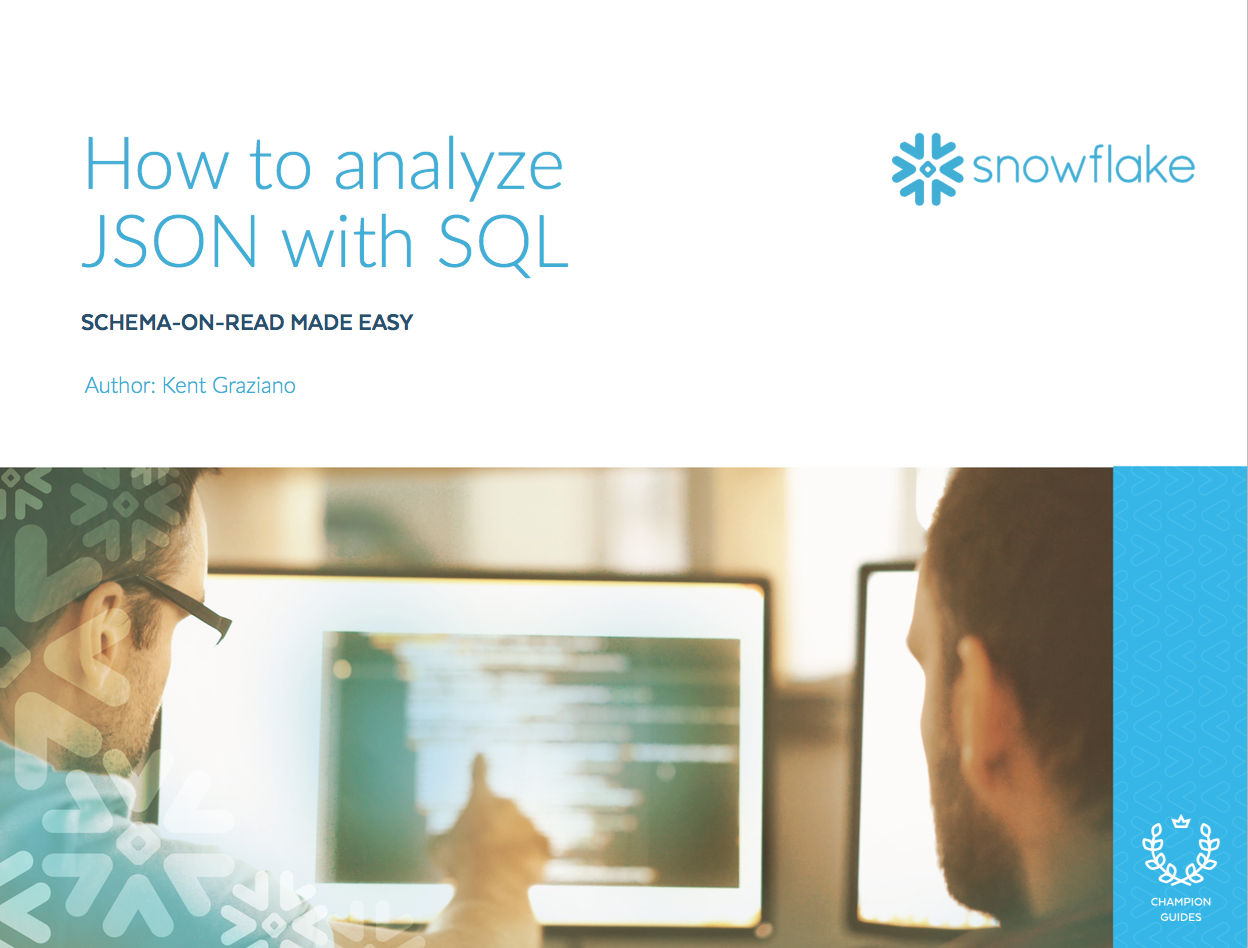One of the key reasons I joined Snowflake is its built-in support to load and query semi-structured data such as JSON. In most conventional data warehouse and Big Data environments, you have to first load this type of data to a Hadoop or NoSQL platform. Then, you must parse it with a product such as MapReduce so you can load the data into tables in a relational database. Then, and only then, you’re ready to analyze the data with SQL queries or a BI/Analytics tool. But why take extra steps when there is a faster, easier way to get the job done?
With Snowflake, you can convert JSON to SQL easily by loading your semi-structured data direct into a relational table, query the data with a SQL statement and then join it to other structured data – all while not fretting about future changes to the schema of that data. Snowflake actually keeps track of the self-describing schema so you don’t have to. No ETL or shredding required.
This means you can leverage your existing knowledge and skills in SQL to jump into the world of big data. Even with this feature, there is still a tiny bit to learn. However, it’s easy with Snowflake’s extensions to SQL. To get you started, we have produced a handy ebook that gives you step-by-step instructions on how to convert JSON to SQL in Snowflake then querying that data with SQL. The book is called How to analyze JSON with SQL: Schema-on-read made easy.
Get your free ebook now and start your journey to analyzing big data in the cloud!
Be sure to keep an eye on this blog or follow us on Twitter (@snowflakedb and @kentgraziano) for all the news and happenings here at Snowflake.
P.S. If you don’t already have a Snowflake account, you can sign up for a self-service account here and get a jumpstart with $400 in free credits!
